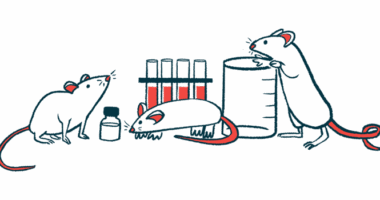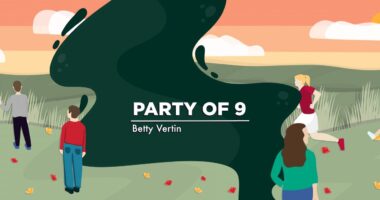Living with Duchenne muscular dystrophy and our bundle of Joy
Our toddler, by any other name, couldn't bring our family more happiness
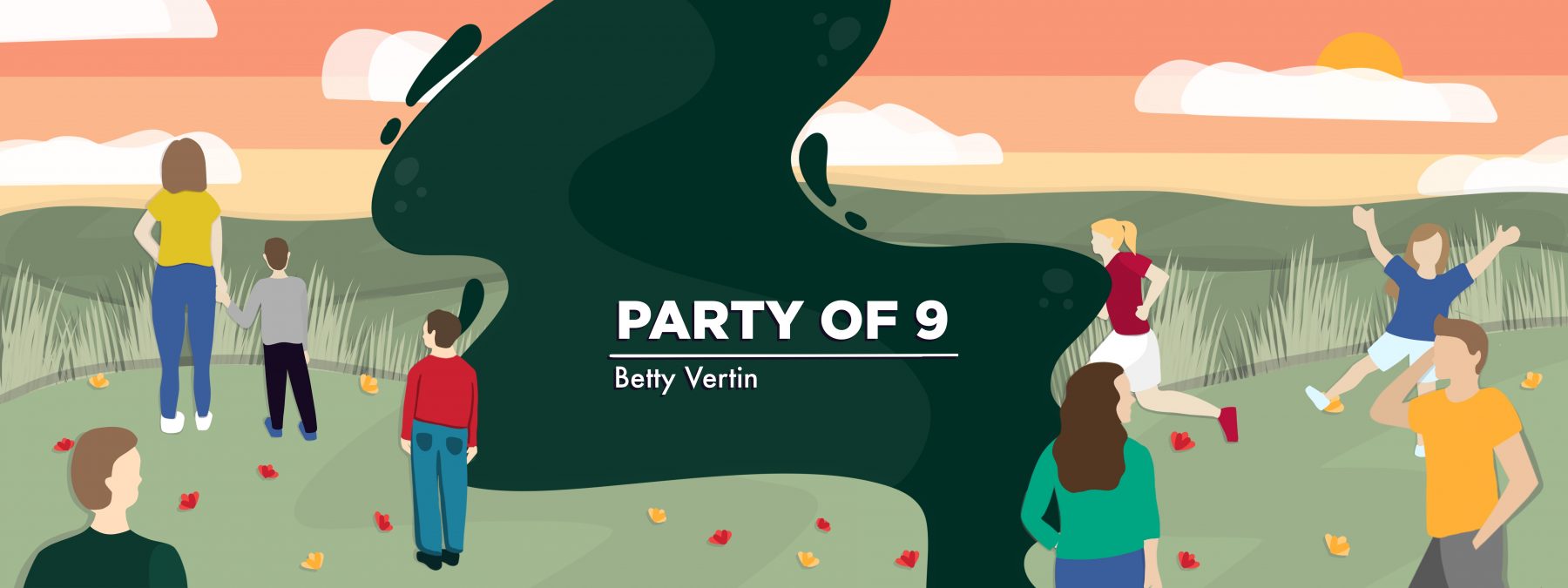
There is joy after a diagnosis of Duchenne muscular dystrophy (DMD). There is joy after the loss of ambulation. There is joy in the midst of watching Duchenne slowly work its progressive, muscle-wasting way through my sons Max, 18, Rowen, 14, and Charlie, 12.
That may be hard to understand. I’ve often met parents freshly gutted by a child’s diagnosis, for instance, who feel their lives will never be the same. Who feel like they’ll never feel happiness or joy again. And I cannot blame them because, in the beginning, I worried about those things, too. But I quickly learned that life with Duchenne can still be happy.
Because I was still happily married to my best friend, Jason, my Duchenne children found happiness even with their significant diagnosis looming in front of them. They snuggled, watched cartoons, and were the same as they’d always been. And as they grow older, we continue to celebrate.
Joy can come in many shapes and sizes; it doesn’t have to be big. The sum of all the daily joys I experience is bigger than Duchenne.
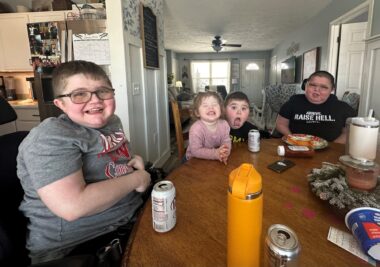
From left, Max, Charlie, and Rowen Vertin at the table for lunch with their toddler sister, Callie Joy. (Courtesy of Betty Vertin)
Love and laughter multiplied
My family’s joy also comes in the shape of my 2-year-old, Callie Joy. My youngest, she had a birthday on Tuesday — or as we like to say, she was 2 on Twoooosday.
While I’m a Duchenne caregiver, I’m also a mother of seven children — Lexi, 22; Chance, 16; Mary, 9; and Callie, Max, Rowen, and Charlie — and all of my children are equal in my experience. The most significant source of happiness and joy in my life is the fullness of this big family. We are a faithful, practicing Catholic family, and even after Duchenne, we stayed open to more life — which led us to Callie!
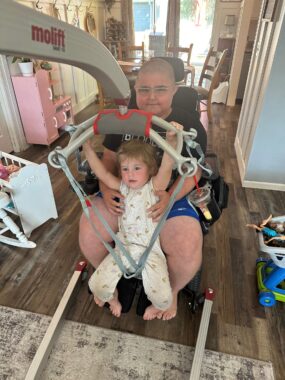
Callie Joy Vertin enjoys riding in the Hoyer lift with her older brother Rowen. (Courtesy of Betty Vertin)
Our youngest came just after Rowen stopped walking and just before Max did. Callie was tiny like all newborns, and even my Duchenne sons were strong enough to hold her and sometimes help with her. I cannot quantify how much that meant to them.
As she has grown into a boisterous toddler, Callie is a source of constant entertainment. Often, the first thing Max, Rowen, and Charlie ask me when I pick them up from school is, “What did Callie do today?”
In our bustling house, not many times do I find myself sitting alone in a room with my husband. But when I do, we never fail to hear Callie and the boys off somewhere in the house, laughing and playing. Even as Lexi, Chance, and Mary get busy with their lives outside our home, Callie is here, bringing them joy.
From the basement laundry room, I can hear Rowen’s chair speeding up and down the hallway, and a knowing smile always creeps across my face because I know Callie has asked for a “wee,” or a ride on a power wheelchair. It’s one of her favorite activities; we don’t even use a stroller.
She has names for each of them: Maa, Ro-Ro, and Cha Cha. She repeats their names when they’re at school, knows the route I drive to pick them up, and chants the name of whoever is next to get picked up.
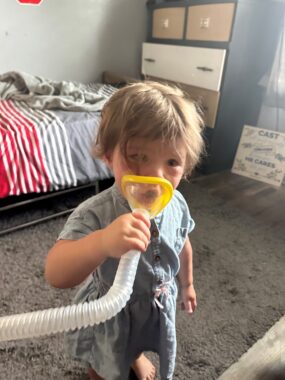
Callie Joy Vertin likes to help her brothers with their cough-assist devices. (Courtesy of Betty Vertin)
Callie loves to fill up their water bottles with me, help with their cough assist, ride in their Hoyer lift, and go to pool therapy with them. She often runs to one of their physical therapists with arms wide open for a hug.
I’m so glad Callie arrived; she changed and helped our family in so many big and little ways. The love in our family multiplied and laughter increased, with more people open to giggling. We have joy, even after a Duchenne diagnosis, loss of ambulation, and the daily work of an unforgiving disease. We have Callie Joy!
Note: Muscular Dystrophy News Today is strictly a news and information website about the disease. It does not provide medical advice, diagnosis, or treatment. This content is not intended to be a substitute for professional medical advice, diagnosis, or treatment. Always seek the advice of your physician or another qualified health provider with any questions you may have regarding a medical condition. Never disregard professional medical advice or delay in seeking it because of something you have read on this website. The opinions expressed in this column are not those of Muscular Dystrophy News or its parent company, Bionews, and are intended to spark discussion about issues pertaining to muscular dystrophy.





